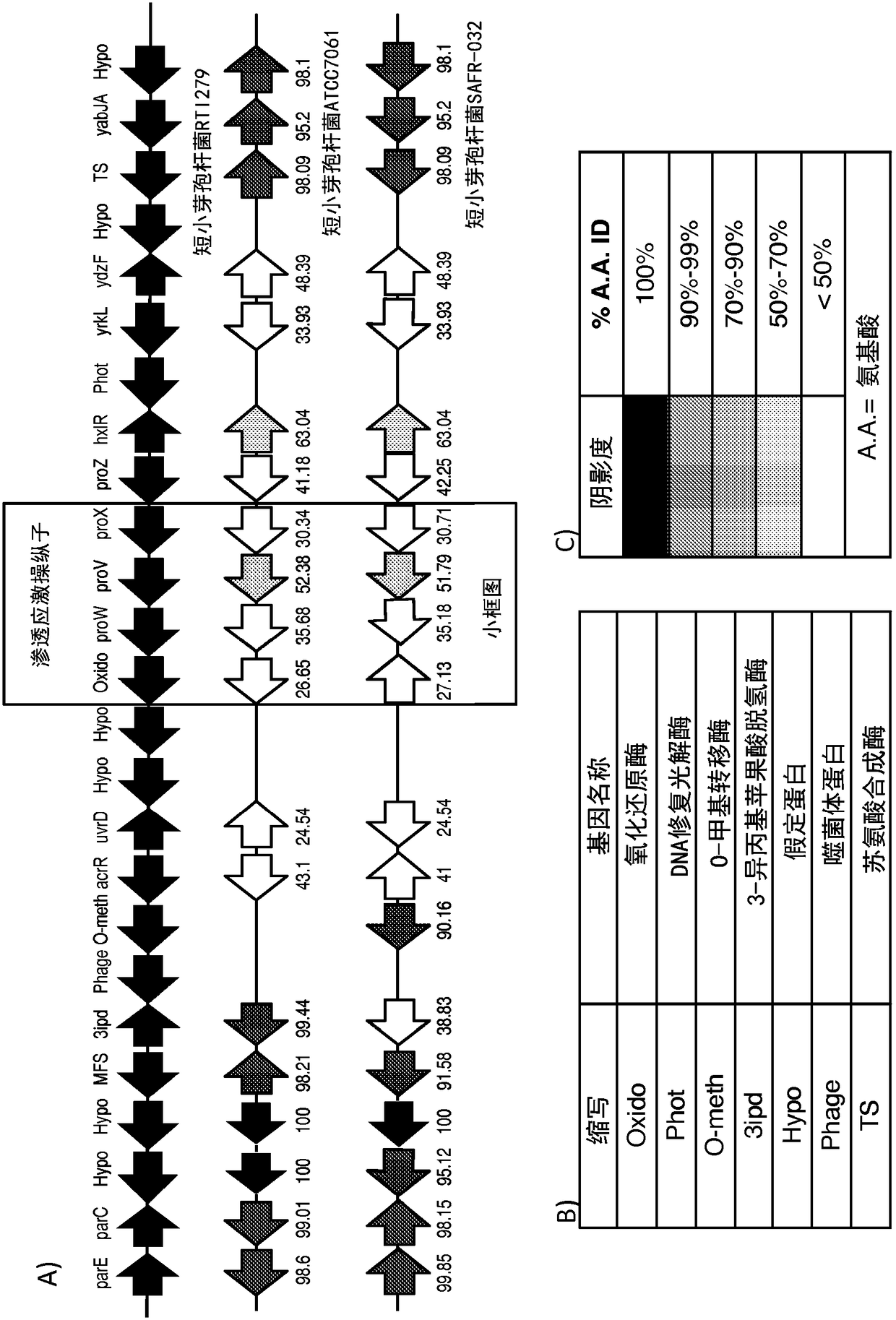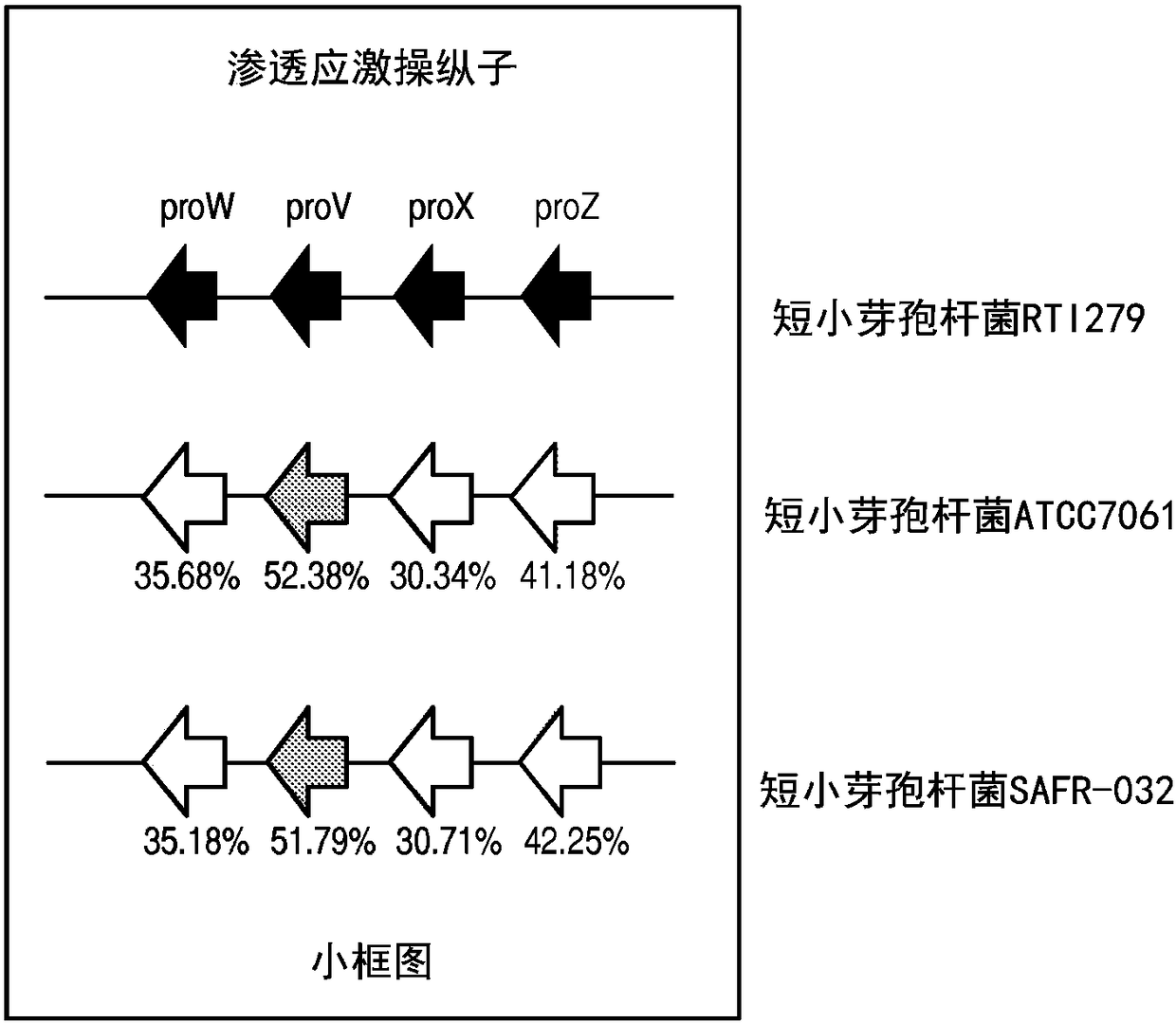Microbial compositions for use in combination with soil insecticides for benefiting plant growth
A plant growth and insecticide technology, applied in the direction of plant growth regulators, biocides, fertilizer mixtures, etc., can solve the problems of high cost, loss, bacteria, fungi, and arthropods.
- Summary
- Abstract
- Description
- Claims
- Application Information
AI Technical Summary
Problems solved by technology
Method used
Image
Examples
Embodiment 11
[0066] Example 11 describes a greenhouse study to evaluate the effect of in-furrow application of bacterial strain CH200 with Capture LFR and liquid fertilizer (8-24-0) on maize growth under ideal humidity and drought stress conditions. These findings indicated that fertilizers had a negative effect on early root development in water-stressed soil environments; however, at 41DAP (V6 stage), these plants treated with Capture LFR+CH200 as well as liquid fertilizers had statistically thicker stem, statistically heavier shoot dry weight, and statistically heavier root dry weight (see Figure 14 A-14C and Figure 15 ). Under ideal water supply conditions, limited statistical differences were detected between Capture LFR and Capture LFR+CH200; the exception was statistically thicker stalks measured at 41 DAP when maize was treated with the CH200 strain. Plants grown in an ideal soil environment containing CH200 were further developed. Typically, plants grown in ideal or arid soil...
Embodiment 12
[0067] Example 12 describes a field trial of cauliflower and turnip plants in which 1.5X 10 11 , 2.5X 10 12 or 2.5X10 13 CFU / ha of Bacillus licheniformis CH200 spores. Addition of CH200 to cauliflower increased cauliflower fresh weight yield from 3 kg (control) to 2.5×10 13 3.6kg and 2.5X10 in CFU / ha of CH200 12 3.8kg at CFU / ha of CH200, representing a 20%-26% increase in weight. Addition of CH200 spores to turnip plants increased tuber weight yield from 3.3 kg (control) to 5.8 kg (2.5×10 13 CFU / ha CH200), 4.2kg (2.5X10 12 CFU / ha CH200) and 4.9kg (1.5X10 11 CFU / ha CH200), or a weight gain of 76%, 27%, or 48%.
Embodiment 13
[0068] Example 13 describes a field trial of zucchini and turnip plants in which 1.5X 10 11 , 2.5X 10 12 CFU / ha of Bacillus pumilus RTI279 spores. The addition of RTI279 spores increased yield of both overall and marketable zucchini compared to control zucchini plants that did not include B. pumilus RTI279 spores in irrigation. Specifically, the plants treated with RTI279 (application rate 2.5×10 12 CFU / ha) brought an average of 36kg of total zucchini, of which 30kg was marketable, compared to untreated plants ( Figure 18 A (control plants) and Figure 18 B (RTI279 application rate 2.5X10 12 CFU / ha)) totals 22kg of zucchini, of which 17kg is salable. The addition of both concentrations of RTI279 spores resulted in a 67% increase in tuber weight yield compared to control turnip plants that did not include B. pumilus RTI279 spores in irrigation.
PUM
 Login to View More
Login to View More Abstract
Description
Claims
Application Information
 Login to View More
Login to View More - R&D
- Intellectual Property
- Life Sciences
- Materials
- Tech Scout
- Unparalleled Data Quality
- Higher Quality Content
- 60% Fewer Hallucinations
Browse by: Latest US Patents, China's latest patents, Technical Efficacy Thesaurus, Application Domain, Technology Topic, Popular Technical Reports.
© 2025 PatSnap. All rights reserved.Legal|Privacy policy|Modern Slavery Act Transparency Statement|Sitemap|About US| Contact US: help@patsnap.com



